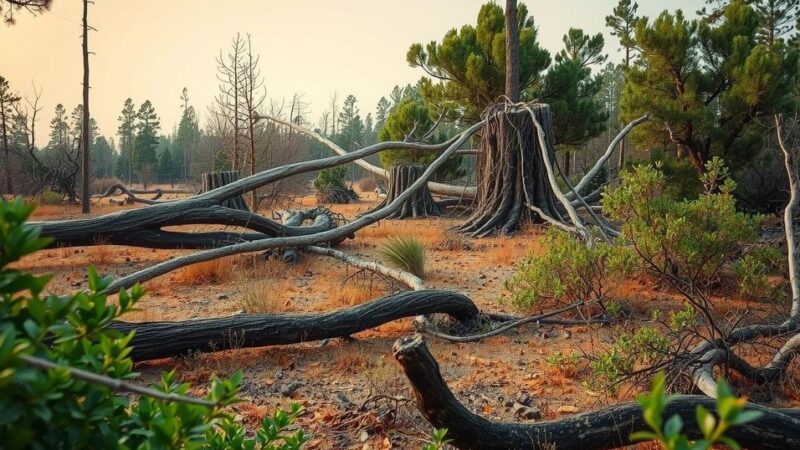A recent study reveals that a 4.5 magnitude earthquake in Iran was not the result of a nuclear test, countering widespread misinformation. The research, led by Dr. Benjamin Fernando from Johns Hopkins, highlights the importance of accurate scientific data interpretation during geopolitical crises and advocates for better collaboration among scientists to address misinformation.
Recent research has discredited the assertion that a 4.5 magnitude earthquake in Iran was the result of a covert nuclear test. This study, published in the journal Seismica, emphasizes the significance of accurately interpreting scientific data, particularly in politically charged scenarios. It emerged amidst heightened tensions in the Middle East, where misinformation circulated widely through social media and mainstream media outlets after the October 5, 2024, quake near Semnan, Iran, a region already prone to seismic activity.
Dr. Benjamin Fernando, a seismologist at Johns Hopkins University and the study’s lead author, remarked on the pervasive disinformation campaign surrounding the earthquake, stating, “This shows how geophysical data played an important role in a geopolitical crisis.” The research team analyzed seismic signals from the earthquake, confirming that it resulted from natural geological processes instead of human-made activities.
The team utilized publicly available seismic data, determining that the earthquake stemmed from a gently sloping fault affected by the collision of the Arabian and Eurasian tectonic plates. Their findings reaffirmed historical patterns of earthquakes in the region, aligning with natural geological forces, while dismissing any nuclear activity as a cause. “Nuclear tests have very different signatures, which are explosive,” Dr. Fernando explained regarding the distinguishable characteristics of seismic waves.
Despite scientific evidence supporting the natural origins of the earthquake, unfounded claims regarding a nuclear test spread rapidly on social media shortly after the event. Initial misinterpretations of seismic data quickly spiraled into a wave of misinformation, with the first allegations surfacing on Twitter just 27 minutes post-quake, including erroneous data from a separate seismic event in Armenia.
Moreover, the misinformation intensified as conspiracy theories linked the Iranian tremor to supposed seismic activity in Israel that same evening. The researchers noted indicators of potentially deliberate disinformation efforts, particularly through channels associated with Russian-backed campaigns, as misinformation soon transitioned to global media coverage. The team highlighted Indian media as particularly influential in propagating the nuclear test claims.
The researchers advocate for enhanced collaboration among seismologists to combat misinformation by rapidly verifying and correcting erroneous interpretations of seismic data. Dr. Saman Karimi, also from Johns Hopkins, suggested that scientific agencies release timely reports to mitigate misleading narratives that may arise from social media discourse. By enabling partnerships between scientists and social media platforms, the spread of inaccurate information could be curtailed effectively.
In the context of international relations, accurate scientific interpretation becomes crucial, especially amid heightened tensions, as was the case following the earthquake in Iran. The incident prompted rapid misinformation online claiming it was tied to a nuclear test, displaying how easily public perception can be swayed in conflict settings. Understanding the geological context and the nature of seismic activity in Iran enriches the narrative surrounding this major earthquake and the subsequent reactions.
In conclusion, the recent study comprehensively dismantles the erroneous narrative that the Iranian earthquake was a nuclear test. By analyzing seismic data and grounding their conclusions in historical patterns of activity, the researchers underscore the importance of scientific integrity, especially during geopolitical crises. The findings call for improved strategies to address misinformation, affirming the need for timely scientific communication, particularly through social media platforms.
Original Source: www.news-expressky.com






